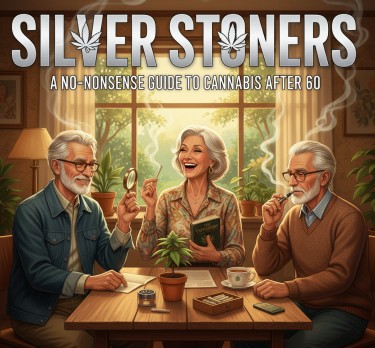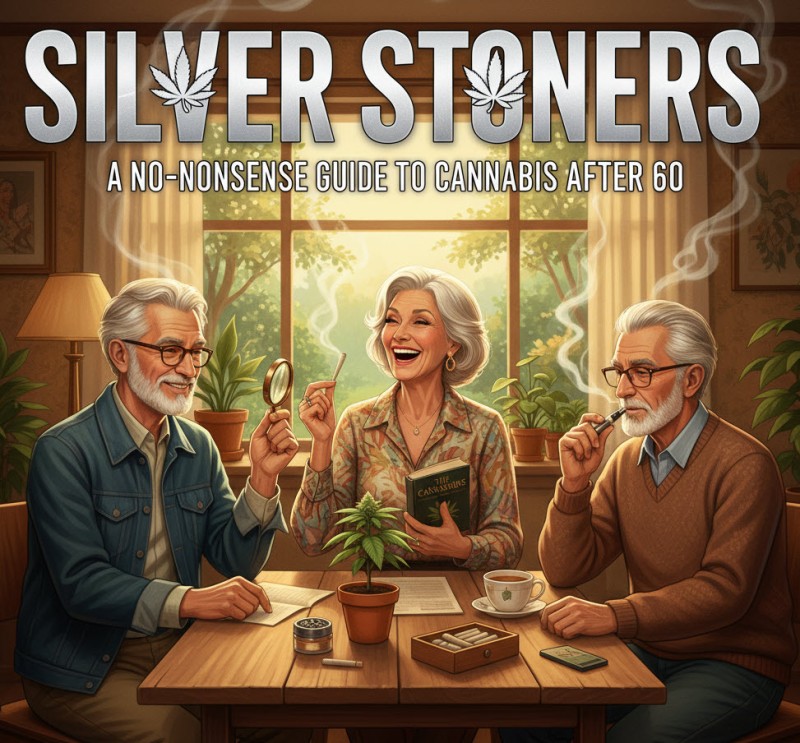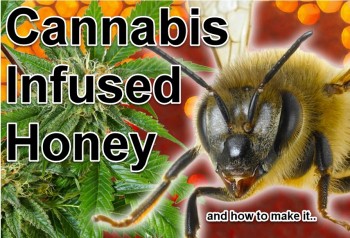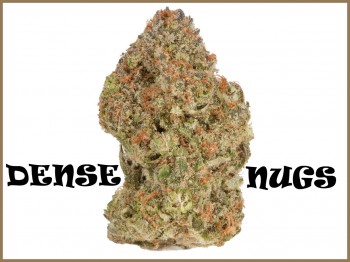
There's a quiet revolution happening in cannabis culture, and it's not being led by college kids or festival-goers. It's being pioneered by retirees, septuagenarians, and people who spent decades believing everything the government told them about marijuana—until they finally decided to see for themselves.
I've been fielding more questions from older adults about trying cannabis for the first time than from any other demographic. These aren't reckless experimenters or rebellious youth. They're people in their 60s, 70s, even 80s who are dealing with arthritis, insomnia, chronic pain, or who simply want to explore something they were too afraid to try during their working years. Some are curious about the medical benefits they've heard about. Others just want to check it off their bucket list before it's too late.
What strikes me about these conversations is the thoughtfulness involved. Older adults approach cannabis with a level of caution and preparation that younger users often skip entirely. They ask about drug interactions, dosing protocols, and long-term effects. They want to understand what they're putting in their bodies and why. This isn't recreational experimentation—it's informed exploration of a substance that might genuinely improve their quality of life.
The challenge is that most cannabis advice is written for young, healthy users who can tolerate high doses and recover quickly from overconsumption. The stakes are different when you're 70. Your metabolism processes cannabinoids differently. Your tolerance is zero. Your medications might interact with cannabis in ways that younger users don't need to consider. And let's be honest: greening out—experiencing anxiety, paranoia, or overwhelming intoxication from too much THC—is miserable at any age, but it's particularly distressing when you're older, alone, and unsure if what you're experiencing is dangerous.
I've spent considerable time researching this topic, consulting with older cannabis users, and studying the physiological differences in how aging bodies process cannabinoids. What I've learned is that cannabis can be remarkably beneficial for older adults—if approached correctly. The endocannabinoid system doesn't disappear with age; if anything, supplementing a depleted system with plant cannabinoids can provide significant relief from age-related ailments.
But this requires a fundamentally different approach than what works for younger consumers. Higher doses aren't better. Faster isn't better. The strongest product isn't the best product. For older adults, the key to positive cannabis experiences lies in patience, preparation, and understanding that less is genuinely more. This article distills the best advice for anyone over 60 considering cannabis for the first time—whether for medical relief, recreational enjoyment, or simple curiosity about what all the fuss is about.
The Essential Guidelines: What Actually Works for Older Adults
Let's start with the non-negotiable foundation: talk to your physician before trying cannabis. I know this sounds like the boring disclaimer everyone ignores, but it's genuinely crucial for older adults. Cannabis interacts with numerous medications, particularly blood thinners, heart medications, and drugs metabolized by the liver. Your doctor needs to know what you're planning, not to judge you, but to ensure you don't create dangerous drug interactions.
If your physician is hostile to cannabis discussion, find a new physician or consult with a cannabis-specialized doctor. Medical marijuana programs exist in most states, and cannabis-friendly practitioners can provide informed guidance without the stigma. This isn't about getting permission—it's about getting accurate information about your specific health circumstances.
The second principle is start low, go slow, and wait. This isn't metaphorical advice; it's a literal protocol. For inhalation (smoking or vaping), this means one small hit—and I mean genuinely small, like inhaling for two seconds—then waiting a minimum of ten minutes before considering another. The effects of inhaled cannabis manifest within minutes, reaching peak intensity around 30 minutes. If you're not feeling it after ten minutes, you can take another small hit. If you rush this process, you'll overshoot your comfortable dose and spend hours in unpleasant territory.
For edibles, the protocol is even more conservative: start with 2.5mg of THC maximum. Wait two full hours—not 45 minutes, not 90 minutes, two full hours—before considering taking more. Edibles are metabolized through the liver, converting delta-9-THC into 11-hydroxy-THC, which is more potent and has longer duration. The onset is slow and unpredictable, varying based on metabolism, stomach contents, and individual physiology. The most common edible mistake among new users is taking more because "it's not working," then getting absolutely demolished when both doses hit simultaneously.
One Reddit user recounted his 90-year-old father taking a gummy alone, then spending the entire night awake, anxious, and sweating—a thoroughly miserable experience that likely prevented him from ever trying cannabis again. This is the scenario we're trying to avoid. There's no antidote for too much THC except time. Once you've taken too much, you're committed to riding it out for hours. Prevention is the only cure.
Method matters enormously for older adults. The consensus from experienced older users and cannabis educators is clear: inhalation provides better control than edibles for first-time users. Within this category, dry herb vaporizers are superior to smoking or cartridge vaping. Here's why:
Dry herb vaporizers heat cannabis flower to temperatures that release cannabinoids and terpenes without combustion. You're inhaling vapor, not smoke, which is significantly gentler on aging lungs. Temperature control allows you to dial in your experience—lower temperatures (around 350-370°F) provide more clear-headed, functional effects, while higher temperatures (390-410°F) produce more sedative, body-focused effects. Devices like the Dynavap G3 cost as little as $35, while more advanced options like the Storz & Bickel Venty or Arizer Solo 3 offer precise temperature control and excellent vapor quality.
The cannabinoid profile is crucial. Don't just grab the highest THC flower or the strongest edible. For first-time older users, Type 2 flower—commonly called 1:1 or balanced flower—is ideal. This contains roughly equal amounts of THC and CBD, typically around 5-10% of each. CBD doesn't produce intoxication, but it modulates THC's effects, reducing anxiety and providing a smoother, more manageable experience. The presence of CBD creates a gentler introduction to cannabis effects while still providing therapeutic benefits.
If you're using flower for inhalation, look for strains with total THC below 15-20%. Modern cannabis often exceeds 25-30% THC, which is unnecessary and potentially overwhelming for new users. Lower THC doesn't mean ineffective—it means controllable.
Set and setting matter more than product selection. Cannabis amplifies your current mood and environment. A comfortable, familiar setting with a trusted person present is essential for first experiences. Don't try cannabis for the first time when you're stressed, anxious, or in an unfamiliar environment. Choose a day when you have no obligations, nobody is expecting you to drive anywhere, and you can simply relax and observe what you're feeling.
Have supplies ready: water (cannabis causes dry mouth), light snacks (you might get hungry), and something to occupy yourself—music, a favorite movie, a comfortable outdoor space. Many older users report that cannabis enhanced their appreciation for simple pleasures they'd taken for granted: listening to music became a more immersive experience, food tasted more vibrant, conversations became more engaging.
Understand that what goes up must come down. THC intoxication is temporary. Even if you take too much and feel uncomfortable, you're not in danger (assuming no contraindicated medications), and the effects will pass. For inhalation, peak effects last 1-3 hours with a gradual decline. For edibles, effects can last 6-8 hours. Knowing this provides reassurance when you're in the midst of an experience and wondering if this is your new permanent state. It's not. Everything returns to baseline.
If you do find yourself too intoxicated, CBD can help counteract THC's effects. Having CBD oil, capsules, or flower on hand provides a safety net. Lying down in a comfortable place, drinking water, and using breathing exercises can also help manage anxiety or discomfort. The Reddit thread included advice to "cease activity at once" if there's any discomfort—excellent guidance that bears repeating.
Beyond Smoking: The Full Spectrum of Cannabis Consumption
One of the most valuable pieces of advice is: don't just smoke—do things with it. Cannabis isn't merely an intoxicant to be passively consumed; it's an enhancer of experiences you already enjoy. Older users report that cannabis made activities more engaging: bowling became hilarious, mini-golf turned into an adventure, watching comedy specials became side-splittingly funny, and simple walks in nature felt revelatory.
This is important because it reframes cannabis from "getting high" to "enhancing life." For older adults, particularly retirees who have extensive free time, cannabis can make mundane activities feel fresh and interesting again. One 60-year-old user on Reddit described retirement with cannabis as "the best thing I've ever done," explaining that cannabis helps manage the aches and pains of aging while making everyday activities more enjoyable.
Consider non-intoxicating cannabis consumption. This is advice many people overlook: you don't have to get high to benefit from cannabis. Raw cannabis contains THCA and CBDA—the acidic precursors to THC and CBD—which are non-intoxicating but provide anti-inflammatory, neuroprotective, and other therapeutic benefits. Juicing raw cannabis leaves or adding them to smoothies delivers these compounds without psychoactive effects.
Similarly, topical cannabis products—creams, balms, patches—can provide localized pain relief without any intoxication. These work through cannabinoid receptors in the skin and don't enter the bloodstream in significant amounts. For arthritis, joint pain, or muscle soreness, topicals offer therapeutic benefits without altering consciousness.
Hemp-derived CBD products, which are legal federally and available nationwide, provide another non-intoxicating option. Quality CBD can help with anxiety, inflammation, sleep issues, and general wellness without producing a high. This might serve as a stepping stone for older adults curious about cannabinoids but not ready for THC.
Consistency matters more than intensity. Many older medical cannabis users find that low, regular doses work better than occasional high doses. Microdosing—consuming sub-threshold amounts that don't produce noticeable intoxication but provide therapeutic benefits—has gained traction among older populations. This might mean 2-3mg of THC taken daily, or a single puff from a vaporizer in the evening. The goal isn't to get maximally high; it's to maintain a baseline level of cannabinoids in your system that supports the endocannabinoid system's regulatory functions.
Explore different consumption times and contexts. Some older users find that cannabis before bed eliminates insomnia and provides deeper, more restorative sleep. Others prefer afternoon use for pain management without sedation. Still others use cannabis socially, finding that it facilitates conversation and laughter with friends or family. There's no single "correct" way to use cannabis—the right approach depends entirely on your goals, preferences, and response.
Don't fall for dispensary hype. Budtenders are often young and may not understand the needs of older consumers. They might recommend products that work for high-tolerance users but are completely inappropriate for beginners. Be explicit about your situation: "This is my first time, I'm 70 years old, and I want the lowest effective dose possible." Reject recommendations for 100mg edibles, ultra-high-THC flower, or dabs and concentrates. These products aren't designed for your use case.
Track your experiences. Keep a simple journal noting what you consumed (strain, amount, method), when you consumed it, how long effects took to manifest, what you felt, and how long it lasted. This data becomes invaluable for refining your approach and identifying what works best for your body and goals.
Connect with other older cannabis users. The Reddit thread demonstrated something powerful: older adults who've successfully integrated cannabis into their lives want to share their experiences and help others. Look for senior cannabis groups, online forums, or community meetups. Hearing from people your age who've navigated this same journey provides reassurance and practical guidance that younger users simply can't offer.
The Sticky Bottom Line: It's Never Too Late to Explore
Cannabis represents a genuine opportunity for improved quality of life in older adulthood. The research increasingly supports what many seniors are discovering firsthand: cannabis can effectively manage chronic pain, reduce inflammation, improve sleep quality, stimulate appetite, reduce anxiety, and provide cognitive benefits for certain neurodegenerative conditions.
But these benefits only materialize with the right approach. Older adults who jump in without preparation, take excessive doses, or fail to consider their unique physiological circumstances often have terrible first experiences that prevent them from ever trying again. This is tragic because it means missing out on something that could genuinely help.
The key insight is that older adults need to reject the "more is better" mentality that pervades cannabis culture. You're not trying to get as high as possible. You're looking for the minimum effective dose that provides benefits without overwhelming intoxication. This requires patience, careful dose titration, and willingness to proceed slowly even when your younger friends or budtenders tell you to "just eat the whole edible."
The medical community is slowly catching up to what patients already know: cannabis has therapeutic value for aging populations. More physicians are becoming educated about cannabis medicine, more research is being conducted specifically on older users, and social stigma continues to decline. If your doctor dismisses cannabis out of hand without discussing potential benefits and risks, that's a doctor problem, not a cannabis problem.
For those considering cannabis for the first time later in life: you're not alone, you're not doing anything wrong, and there's no age limit on trying something new. Whether you're chasing bucket list experiences, seeking relief from chronic conditions, or simply curious about what cannabis feels like, approach it thoughtfully and you're likely to have a positive experience.
Start with consultation, not consumption. Talk to your doctor, research your options, understand the legal landscape in your state, and make an informed decision. When you do try cannabis, start absurdly low—lower than feels necessary. One hit. One small edible. Wait much longer than seems reasonable. You can always take more; you can never take less once it's consumed.
Find your people. The older cannabis community is growing rapidly and they're eager to share knowledge. Learn from those who've already walked this path. And once you've found what works for you, pay it forward by sharing your experiences with other curious older adults who are where you started.
Cannabis isn't a miracle cure, but it's a remarkably safe, versatile plant medicine with thousands of years of human use behind it. Used intelligently and appropriately, it might just improve your retirement years in ways you never expected. And in a world that often tells older adults to slow down, stop exploring, and accept decline, choosing to try something new—whether it's cannabis, a new hobby, or any other life experience—is an act of defiance worth celebrating.
Welcome to the silver stoner revolution. Take it slow, enjoy the ride, and remember: it's never too late to discover something that makes life a little bit better.







